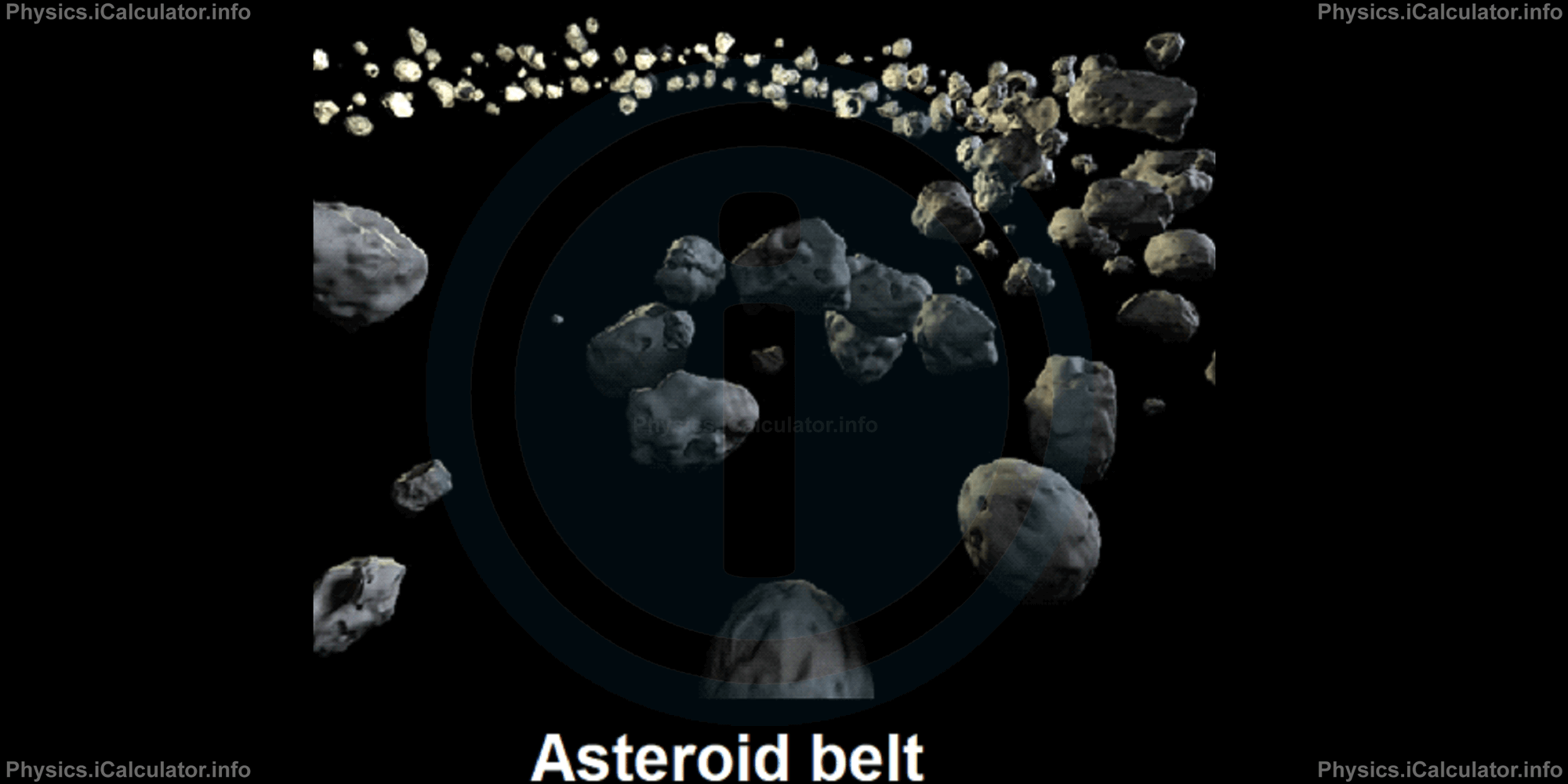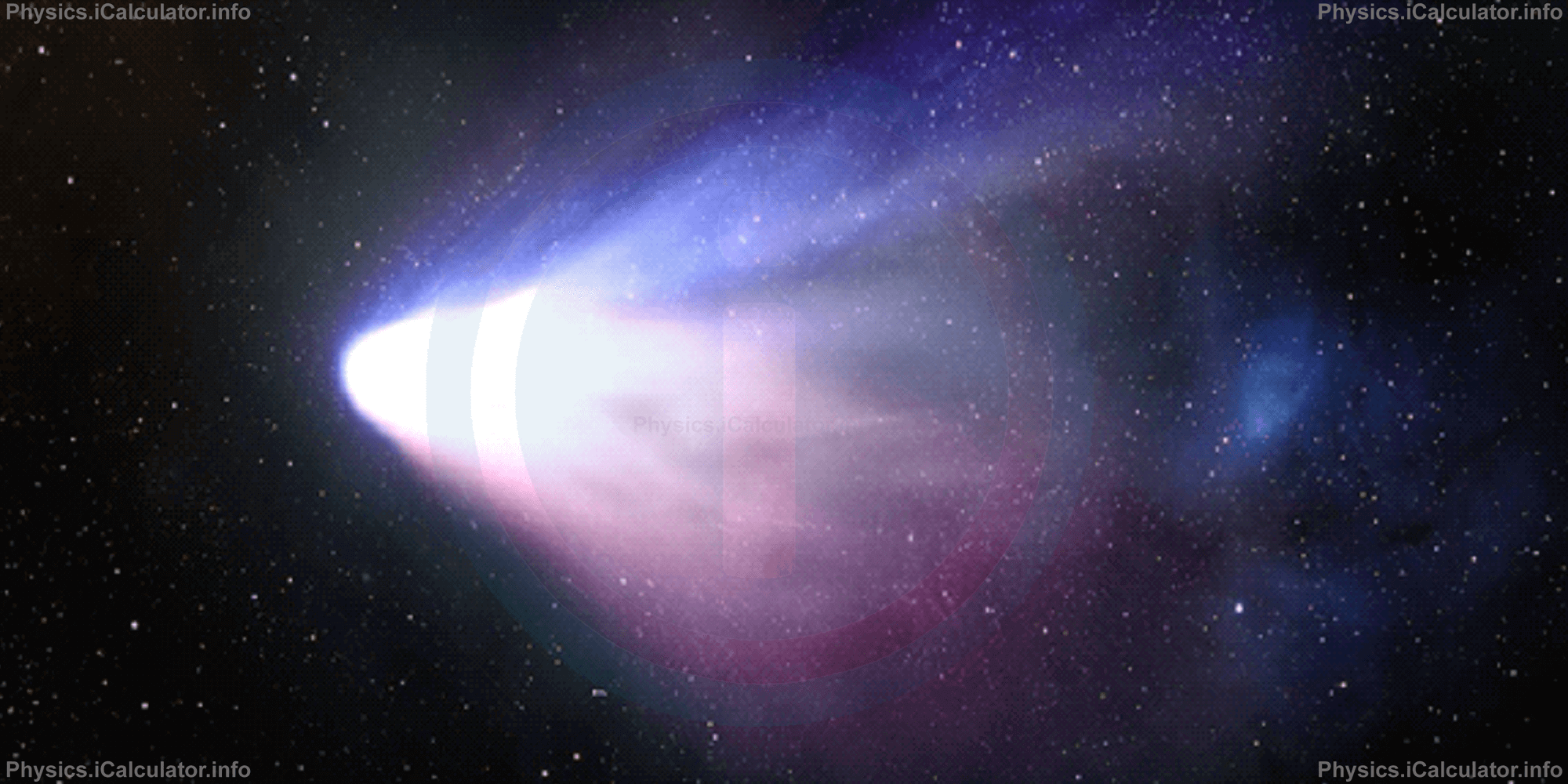Menu
Physics Lesson 22.1.6 - Other Celestial Bodies in the Solar System
Please provide a rating, it takes seconds and helps us to keep this resource free for all to use
Welcome to our Physics lesson on Other Celestial Bodies in the Solar System, this is the sixth lesson of our suite of physics lessons covering the topic of Earth and Other Celestial Bodies, you can find links to the other lessons within this tutorial and access additional physics learning resources below this lesson.
Other Celestial Bodies in the Solar System
There are other types of celestial bodies besides planets and natural satellites floating on the space of our Solar System. They include:
a. Asteroids
Asteroids are small celestial bodies revolving around the Sun. They are the leftovers from the formation of our solar system about 4.6 billion years ago. Over 150 million asteroids larger than 100 m are estimated to be actually floating throughout the space of our Solar System.
The difference between asteroids and moons is that asteroids do not pertain to any planet, instead they only revolve around the Sun. On the other hand, they cannot be planets either, due to their small dimensions.
Most asteroids present in our Solar System are located between Mars and Jupiter in a region known as the asteroid belt. The greatest of them is called Ceres; it has a radius of 500 km.

Asteroids are classified in three groups based on their matter composition. They are C-, S-, and M-types.
- The C-type (chondrite) asteroids are most common. They probably consist of clay and silicate rocks, and are dark in appearance.
- The S-types ("stony") are made up of silicate materials and nickel-iron.
- The M-types are metallic (nickel-iron).
When an asteroid enters the Earths' atmosphere, it heats up because of friction with air and eventually burns out producing a moving light in the sky. In scientific terms, they are called meteors while in popular terminology they are known as falling stars.
Asteroids with a 1 km (0.62 mi) diameter strike Earth every 500,000 years on average. Large collisions - with 5 km (3 mi) objects - happen approximately once every twenty million years.
There is a formula known as Titius-Bode Law used to predict the distance between a planet and its corresponding star in any given solar system. The formula suggests that, extending outward, each planet should be approximately twice as far from the star as the one before. Its mathematical form when applied is our Solar System is
where n = minus infinity for Mercury, n = 0 for Venus, n = 1 for Earth, n = 2 for Mars, n = 3 for Jupiter, n = 4 for Saturn, n = 5 for Uranus and n = 6 for Neptune. This distance is measured in au (au stands for astronomical unit = 150 million km that represents a rounded value of Sun-Earth distance). The formula fits perfectly for the first 5 planets but lacks accuracy for the next three.
The original formula was slightly different where the number n = 5 was missing in the list and the counting started from n = 1. This was an indication that a planet is missing between Mars and Jupiter. Giving that the asteroids belt corresponds to this section of space, we conclude that these asteroids either derive from a destroyed planet or they represent a new planet not formed yet. Then, the formula of Titius-Bode Law was corrected to take the actual form.
Example 2
Calculate the distance from Sun to Mars in astronomical units and then express this value in kilometres.Solution 2
Mars is the fourth planet of our solar system (n = 2). Thus, we obtain for the Sun-Jupiter distance by applying the Titius-Bode law:
= 1.6 au
= 1.6 × 150 million km
= 210 million km
This value is close (but not perfect) to the actual value (227.9 million km) calculated with modern tools
Comets
Comets are celestial bodies made up of various material's and ices mixed with space dust. They have diameters ranging from a few hundred meters to several tens of kilometers. Comets revolve around the Sun following stretched orbits. When a comet gets closer to the Sun, its temperature increases; the frozen ice begins to evaporate. As a result, a long bright cloud is formed around the nucleus of comet, forming a bright tail behind it.

When a comet approaches the Sun at a distance comparable to the distance of Earth from the Sun, the tail elongates up to several ten millions of kilometers producing an amazing view. The most famous comet is Halley comet, which is visible from Earth one in about 76 years (the last time being in 1986). It will be visible again in mid-2061.
You have reached the end of Physics lesson 22.1.6 Other Celestial Bodies in the Solar System. There are 6 lessons in this physics tutorial covering Earth and Other Celestial Bodies, you can access all the lessons from this tutorial below.
More Earth and Other Celestial Bodies Lessons and Learning Resources
Whats next?
Enjoy the "Other Celestial Bodies in the Solar System" physics lesson? People who liked the "Earth and Other Celestial Bodies lesson found the following resources useful:
- Solar Feedback. Helps other - Leave a rating for this solar (see below)
- Cosmology Physics tutorial: Earth and Other Celestial Bodies. Read the Earth and Other Celestial Bodies physics tutorial and build your physics knowledge of Cosmology
- Cosmology Revision Notes: Earth and Other Celestial Bodies. Print the notes so you can revise the key points covered in the physics tutorial for Earth and Other Celestial Bodies
- Cosmology Practice Questions: Earth and Other Celestial Bodies. Test and improve your knowledge of Earth and Other Celestial Bodies with example questins and answers
- Check your calculations for Cosmology questions with our excellent Cosmology calculators which contain full equations and calculations clearly displayed line by line. See the Cosmology Calculators by iCalculator™ below.
- Continuing learning cosmology - read our next physics tutorial: Sun and Planetary Motion
Help others Learning Physics just like you
Please provide a rating, it takes seconds and helps us to keep this resource free for all to use
We hope you found this Physics lesson "Earth and Other Celestial Bodies" useful. If you did it would be great if you could spare the time to rate this physics lesson (simply click on the number of stars that match your assessment of this physics learning aide) and/or share on social media, this helps us identify popular tutorials and calculators and expand our free learning resources to support our users around the world have free access to expand their knowledge of physics and other disciplines.